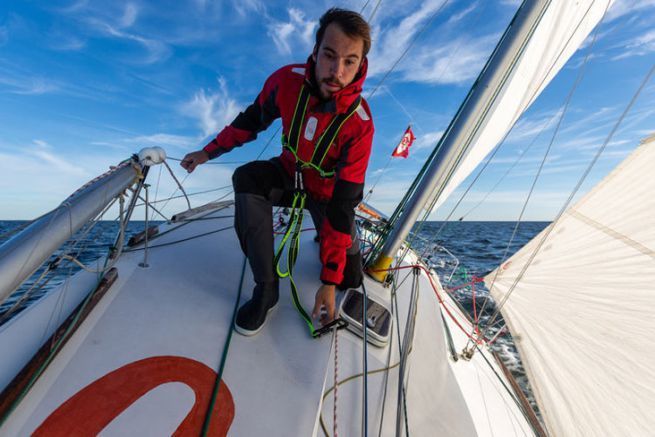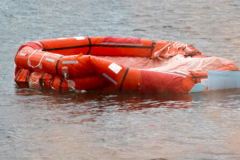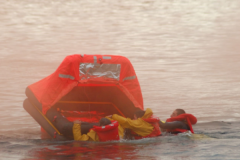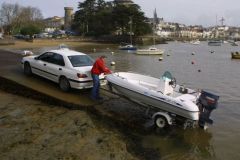As its name suggests, this line is a way of watching over the life of the sailor. It is a line (strap, cable, rope...) stretched from the stern to the bow of the boat. The crew member who has to move towards the mast foot or the foredeck hangs the carabiner of his harness lanyard on it. This way, without unhooking, he will be able to stay connected to the boat all along his displacement.
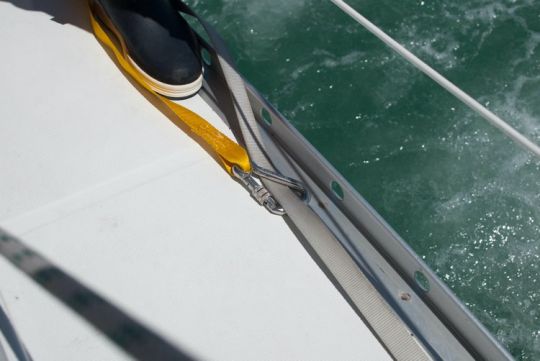
Most common on sailing boats
Even if a harness and a lanyard are compulsory on a motorboat (regardless of the number of crew members when sailing offshore...), lifelines are more common on sailing boats. On the latter, when sailing offshore, one harness and lanyard is required for each crew member on board. The harness can be integrated (and it is advisable) in the life jacket.
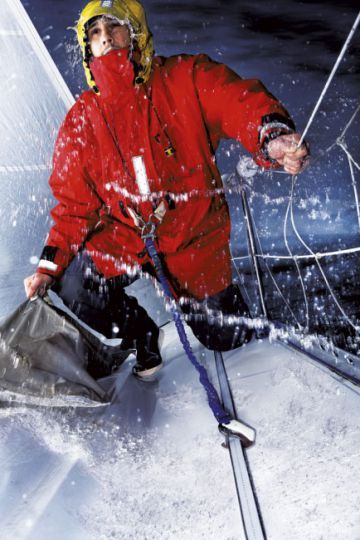
The strap to avoid rolling under the feet
While lifelines were once made of cable, they are now largely replaced by flat webbing models. This is because on the deck, a cable runs under the boot while the strap does not interfere, thus improving safety.

How to install a lifeline?
Often the lifeline runs all the way along the planking from the rear cleat to the front cleat. This is not necessarily a good idea. If a crewmember falls overboard, he or she is hanging by the harness lanyard from the lifeline. If the lifeline is close to the edge of the boat, then the crew member is in the water, being towed by the boat, a very uncomfortable situation. The lifeline should be installed as close as possible to the boat's centreline. It will be well tensioned so that it doesn't float in the wind or give slack in the waterfall. But not too taut either, otherwise we wouldn't be able to get the carabiners through it. There's no need to take her to the bow either. The crew member who has to go as far as the forestay benefits from the full length of his lifeline.
Ideally, we will run the lifeline on top of the deckhouse, from each side, to arrive at a single point in the middle of the front beach. This way, a crew member leaving the cabin will be able to moor there even before having put one foot in the cockpit.
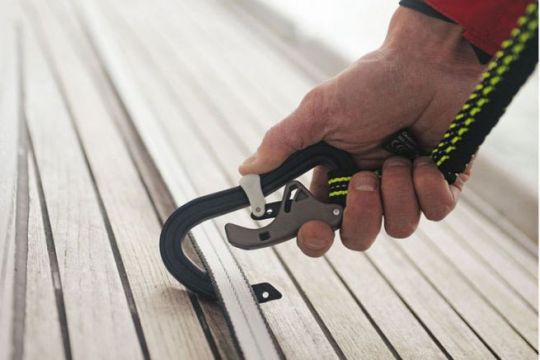
Strong mooring points
The lifelines support between 2 and 3 tons before breaking. Reinforced fixing points are therefore required that will hold at least this load. The anchorage points will therefore be reinforced with through bolts and a counterplate under the deck.
For the webbing to have its full strength, it should not be assembled with knots. Seams are preferable. Sailmakers can do this very well at a lower cost.
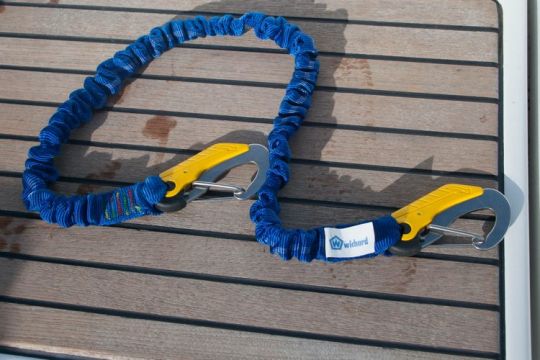
Regular maintenance
Like all fibres, lifeline straps do not like UV light. They deteriorate over time. Manufacturers advertise a 2 year life span if you do not stow your lifelines when you are not sailing. What we don't recommend: Because in addition to wearing out prematurely, straps laid flat on deck mould green foam type dirt.
In winter, it is advisable to rinse the lifelines with plenty of water (in order to desalinate them), dry them before storing them away from light and humidity. But in any case, changing your lifelines at least every 5 years is not a luxury. And if you don't, at least have your sailmaker check the seams.
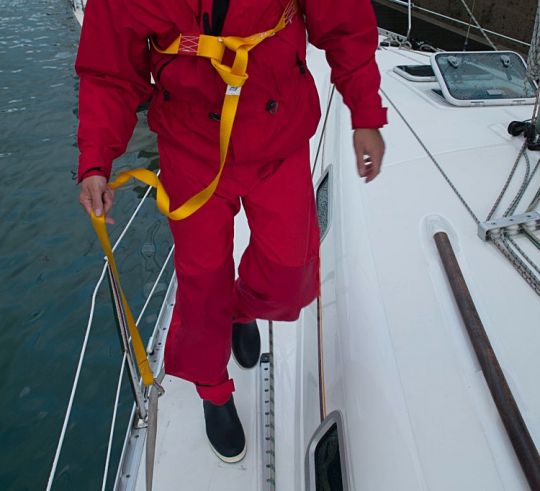
Models adaptable to the length of the boat
You can order your lifeline from your sailmaker with a precise calculation of its length or opt for adjustable models. Plastimo and Wichard offer some very efficient models, adjustable in length.
